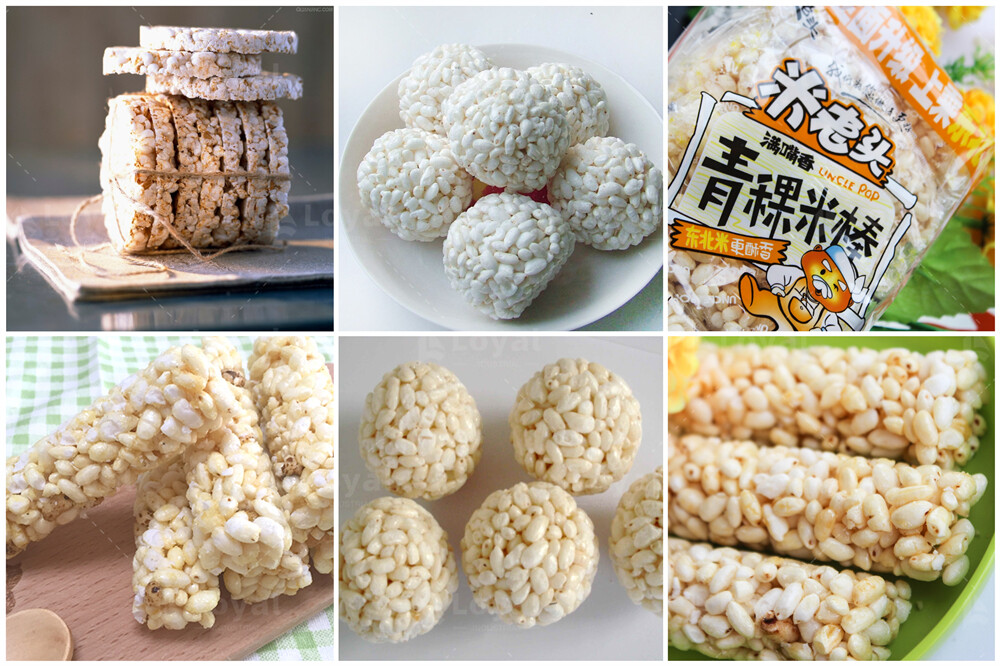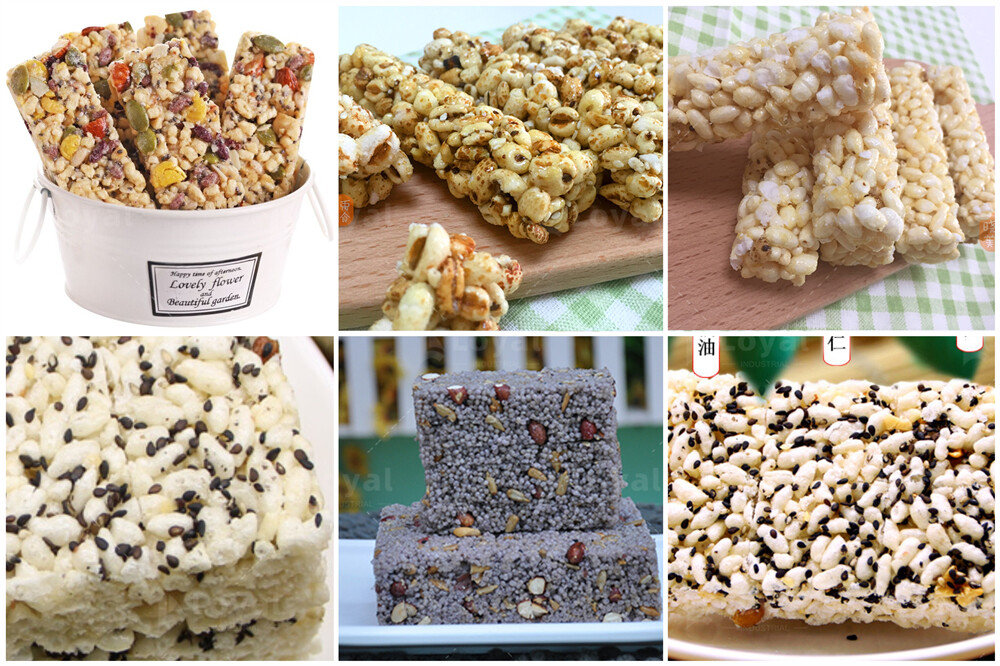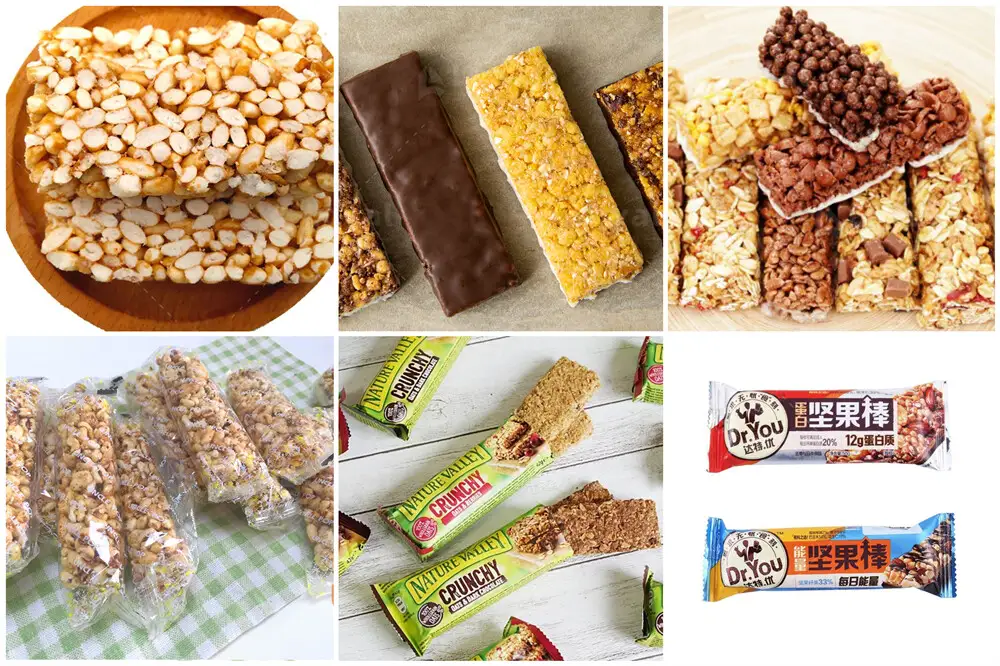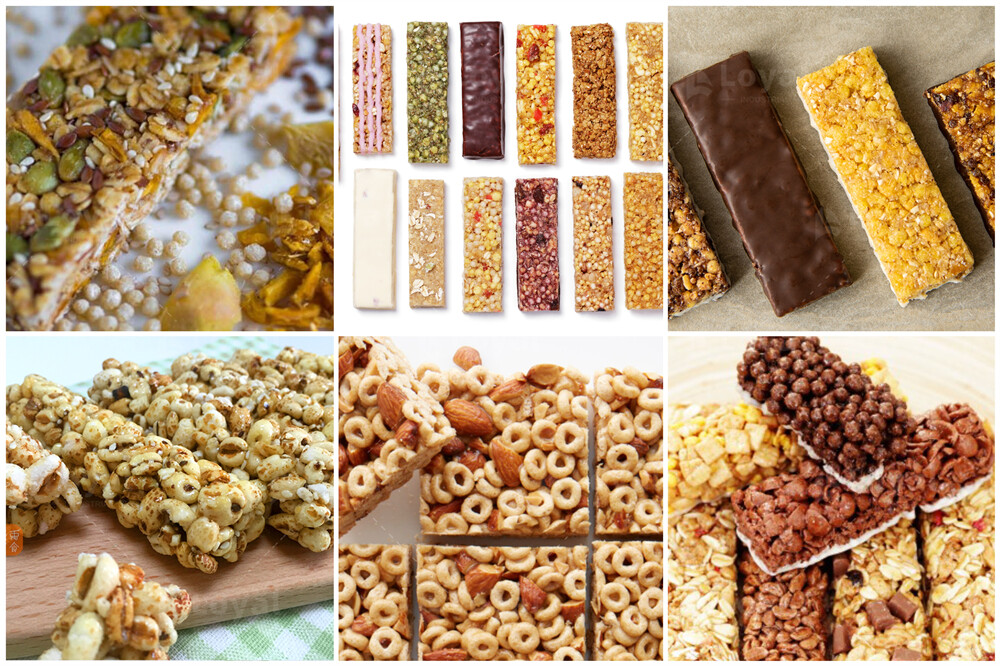The Ultimate Guide to Granola Bar Production Line in 2024
Introduction
The granola bar industry has experienced significant growth, driven by increasing consumer demand for convenient, healthy snacks. As we move into 2024, the efficiency and effectiveness of a granola bar production line are more critical than ever. This guide aims to provide an in-depth look at the components, processes, and innovations that define a modern granola bar production line.
A well-designed granola bar production line is essential for maintaining product quality, ensuring food safety, and meeting the production demands of a competitive market. This guide will explore each aspect of the production line, from initial setup to ongoing maintenance, with a focus on optimizing performance and sustainability.
The production line for granola bars involves several key stages, including ingredient preparation, mixing, forming, baking or chilling, cutting, and packaging. Each of these stages requires specialized equipment and careful coordination to produce consistent, high-quality granola bars. Automation and technological advancements play a crucial role in enhancing efficiency and reducing manual labor, making it possible to scale production while maintaining stringent quality standards.
In addition to detailing the technical aspects of a granola bar production line, this guide will also address important considerations such as quality control, sustainability practices, and future trends in the industry. By understanding these elements, manufacturers can better position themselves to adapt to changing market demands and continue to innovate in the production of granola bars.

Work Principle of a Granola Bar Production Line
A granola bar production line is designed to efficiently produce high-quality granola bars through a series of well-coordinated processes. Understanding the working principles of each stage in the production line is crucial for optimizing performance and ensuring product consistency. Here is an authoritative overview of the key stages and their functions in a modern granola bar production line:
1. Ingredient Handling and Preparation
The production process begins with the handling and preparation of raw ingredients. This includes the storage, weighing, and initial mixing of ingredients such as oats, nuts, sweeteners, and dried fruits. Advanced bulk storage systems and precision weighing scales are essential for maintaining the consistency and quality of the granola bar mixture.
2. Mixing and Blending
High-capacity mixers blend the dry and wet ingredients to create a uniform granola mixture. This step is critical for ensuring that all ingredients are evenly distributed, which affects the texture and taste of the final product. Industrial mixers are equipped with programmable settings to handle different recipes and ingredient combinations efficiently.
3. Forming and Shaping
The mixed granola is then transferred to forming machines, where it is shaped into a continuous sheet or individual bars. Extrusion machines are commonly used in this stage, providing precise control over the shape and size of the granola bars. Adjustable roller presses help achieve the desired thickness and density.
4. Baking or Chilling
Depending on the recipe, the granola bars are either baked or chilled. Convection ovens are used for baking, providing even heat distribution to ensure consistent cooking. For no-bake bars, cooling tunnels rapidly chill the mixture to set it properly. Temperature control systems are vital in this stage to achieve the perfect texture.
5. Cutting
Once the granola sheet is formed and set, it is cut into individual bars using high-speed cutting machines. Ultrasonic cutters are often employed for their ability to make clean, precise cuts without causing the bars to crumble or stick. Consistency in bar size and shape is crucial for packaging and presentation.
6. Packaging
The final stage involves packaging the granola bars to ensure they remain fresh and protected. Automated flow wrappers individually wrap each bar, while vacuum sealers can be used for bulk packaging. Efficient packaging systems help extend shelf life and facilitate easy distribution.
7. Quality Control
Throughout the production process, quality control measures are implemented to ensure each bar meets the required standards. This includes visual inspections, weight checks, and metal detection. Quality control systems help identify and rectify any deviations in real-time, maintaining the high standards of the production line.

Key Features of a Granola Bar Production Line
Feature | Description |
| Automated Ingredient Handling | Ensures precise measurement and mixing of raw ingredients, reducing manual labor and improving consistency. |
| High-Capacity Mixers | Mixes dry and wet ingredients uniformly, essential for maintaining the texture and taste of granola bars. |
| Extrusion Forming Machines | Shapes the granola mixture into continuous sheets or individual bars with precise control over dimensions. |
| Adjustable Roller Presses | Allows customization of bar thickness and density to meet specific product requirements. |
| Convection Ovens | Provides even heat distribution for baking granola bars, ensuring consistent texture and quality. |
| Cooling Tunnels | Rapidly chills no-bake bars to set them properly, maintaining their shape and structure. |
| Ultrasonic Cutting Machines | Ensures clean, precise cuts of granola bars without causing crumbling or sticking. |
| Automated Flow Wrappers | Individually wraps each bar, protecting them from moisture and contamination. |
| Vacuum Sealers | Used for bulk packaging, extending the shelf life of granola bars by removing air. |
| Quality Control Systems | Includes visual inspections, weight checks, and metal detection to ensure product consistency and safety. |
| SCADA Systems | Monitors and controls the production process, enhancing efficiency and reducing downtime. |
| Energy-Efficient Technologies | Implements sustainable practices to reduce energy consumption and environmental impact. |
| Recipe Management Software | Stores and manages multiple recipes, allowing quick changes and consistency in production. |
| Modular Design | Facilitates easy upgrades and maintenance, minimizing downtime and ensuring continuous production. |

Key Equipment in a Granola Bar Production Line
A well-designed granola bar production line incorporates various specialized equipment to ensure efficient, high-quality production. Here are the key pieces of equipment essential to a modern granola bar production line:
1. Ingredient Handling Systems
Efficient ingredient handling is crucial for maintaining consistency and quality in granola bar production. This system typically includes:
Bulk Storage Silos: For storing large quantities of oats, nuts, and other dry ingredients.
Conveyors: Transport raw materials from storage to mixing areas, ensuring a continuous production flow.
2. High-Capacity Mixers
Mixers play a vital role in blending dry and wet ingredients uniformly. Key types include:
Horizontal Mixers: Ideal for mixing large batches, providing thorough and consistent blends.
Ribbon Blenders: Used for dry ingredients, ensuring even distribution before adding binders.
3. Extrusion Forming Machines
These machines shape the mixed granola into continuous sheets or individual bars, critical for maintaining uniformity. Features include:
Single-Screw Extruders: Efficient for producing consistent shapes.
Twin-Screw Extruders: Offer greater flexibility and control over the final product texture.
4. Roller Presses
Roller presses adjust the thickness and density of the granola mixture. Essential features:
Adjustable Rollers: Allow for precise control of bar dimensions.
Temperature Control: Ensures the mixture remains pliable during pressing.
5. Baking or Chilling Systems
Depending on the recipe, granola bars are either baked or chilled. Key equipment includes:
Convection Ovens: Provide even heat distribution for baking granola bars, ensuring a uniform texture.
Cooling Tunnels: Rapidly chill no-bake bars to set them properly and maintain their shape.
6. Cutting Machines
Cutting machines are essential for dividing the granola sheet into individual bars. Types include:
Rotary Cutters: Ideal for high-speed production, ensuring consistent bar sizes.
Ultrasonic Cutters: Use ultrasonic waves to make clean cuts, preventing crumbling and sticking.
7. Packaging Machines
Automated packaging ensures product freshness and extends shelf life. Key machines:
Flow Wrappers: Individually wrap each granola bar, protecting them from moisture and contamination.
Vacuum Sealers: For bulk packaging, removing air to extend shelf life.
Cartoners: Efficiently group and package bars for retail distribution.
8. Quality Control Systems
Quality control is critical for maintaining product standards. Essential components:
Metal Detectors: Ensure no metal contaminants are present.
Checkweighers: Verify the weight of each bar to ensure consistency.
X-Ray Inspection Systems: Detect foreign objects and ensure product integrity.
9. Automation and Integration
Advanced automation enhances efficiency and reduces manual labor. Key technologies:
SCADA Systems: Monitor and control the production process, ensuring optimal performance.
Robotic Arms: Automate repetitive tasks such as packaging and palletizing, increasing speed and accuracy.
10. Ancillary Equipment
Supporting equipment enhances the overall production process. This includes:
Labeling Machines: Apply labels to individual bars and packages, ensuring regulatory compliance.
Date Coders: Print manufacturing and expiration dates on packaging for traceability.

Importance of Automated Processes and Efficiency in Modern Production Lines
In today's competitive food manufacturing industry, the integration of automated processes within a granola bar production line is crucial. Automation not only enhances efficiency but also ensures consistent product quality and reduces operational costs. Below, we explore the importance of automation and its impact on modern production lines.
1. Enhanced Efficiency
Automated processes streamline production by reducing the need for manual labor. Key benefits include:
Increased Throughput: Automated machines can operate continuously, significantly increasing the production capacity and meeting high market demand.
Reduced Downtime: Automation minimizes human error and mechanical faults, ensuring a more reliable and continuous production flow.
2. Consistent Product Quality
Maintaining consistent quality is critical in food manufacturing. Automation contributes to this by:
Precision and Accuracy: Automated systems ensure precise measurement and mixing of ingredients, leading to uniform granola bars in every batch.
Controlled Environment: Machines can maintain optimal conditions (temperature, humidity) throughout the production process, ensuring consistency.
3. Cost Reduction
Although the initial investment in automation may be high, it leads to significant cost savings in the long run by:
Labor Costs: Reducing the need for manual labor lowers overall labor costs and minimizes the risk of human error.
Resource Optimization: Automated systems use resources more efficiently, reducing waste and maximizing the use of raw materials.
4. Improved Safety and Hygiene
Automation enhances safety and hygiene standards in the production line by:
Minimizing Human Contact: Reduced human interaction with the product decreases the risk of contamination.
Safety Features: Modern machinery is equipped with safety features that protect workers and prevent accidents.
5. Real-Time Monitoring and Data Analysis
Automation facilitates real-time monitoring and data collection, which are essential for optimizing production processes. Key aspects include:
SCADA Systems: Supervisory Control and Data Acquisition (SCADA) systems allow for real-time monitoring and control of the production line, identifying potential issues before they become critical.
Data-Driven Decisions: Analyzing production data helps in making informed decisions, improving efficiency, and enhancing product quality.
6. Flexibility and Scalability
Automated production lines are designed to be flexible and scalable, accommodating changes in product demand and new product introductions:
Quick Changeovers: Automated systems can be reprogrammed quickly to switch between different product types or recipes, reducing downtime.
Scalability: As demand grows, additional automated modules can be integrated into the existing production line without major disruptions.
7. Environmental Impact
Automation can also contribute to more sustainable manufacturing practices by:
Energy Efficiency: Automated systems are often more energy-efficient than manual processes, reducing the overall carbon footprint.
Waste Reduction: Precise control over ingredients and processes reduces waste, contributing to more sustainable production.

Setting Up a Granola Bar Production Line
Setting up a granola bar production line requires careful planning and execution to ensure efficiency, product quality, and compliance with industry standards. Below, we outline the essential steps and considerations for establishing a successful production line.
1. Facility Design and Layout
A well-designed facility is crucial for smooth operation and workflow. Key considerations include:
Space Utilization: Optimize the use of available space to accommodate all necessary equipment and allow for efficient movement of materials.
Workflow Optimization: Design the layout to minimize the distance between stages in the production process, reducing handling time and potential contamination risks.
Sanitation and Safety: Ensure the facility design complies with hygiene and safety standards, including easy-to-clean surfaces and proper ventilation systems.
2. Equipment Selection and Integration
Choosing the right equipment is critical for the performance of the granola bar production line. Consider the following:
Scalability: Select equipment that can scale with your production needs, allowing for future expansion without significant downtime.
Compatibility: Ensure all equipment components are compatible and can be integrated seamlessly to form a cohesive production line.
Automation: Invest in automated systems to reduce manual labor, increase efficiency, and maintain consistent product quality.
3. Installation and Commissioning
Proper installation and commissioning of equipment are essential to avoid future operational issues. Steps include:
Professional Installation: Hire experienced technicians to install machinery according to manufacturer specifications and industry standards.
Testing and Calibration: Perform thorough testing and calibration of all equipment to ensure it operates correctly and meets production requirements.
Training: Provide comprehensive training for all operators and maintenance staff to ensure they understand how to use and maintain the equipment properly.
4. Quality Control Implementation
Implementing robust quality control measures is vital to maintaining high product standards. Key components include:
Inspection Systems: Install inspection systems at critical points in the production line to detect defects or contaminants.
Standard Operating Procedures (SOPs): Develop and enforce SOPs for each stage of production to ensure consistency and compliance with food safety regulations.
Regular Audits: Conduct regular internal and external audits to verify adherence to quality standards and identify areas for improvement.
5. Maintenance and Support
Regular maintenance is necessary to keep the production line running smoothly and prevent unexpected downtime. Best practices include:
Preventive Maintenance Schedule: Establish a preventive maintenance schedule to routinely check and service equipment components.
Spare Parts Inventory: Maintain an inventory of critical spare parts to minimize downtime in case of equipment failure.
Technical Support: Partner with equipment manufacturers or third-party service providers to ensure access to technical support and expertise when needed.
6. Compliance and Certification
Ensure your production line meets all relevant industry standards and regulatory requirements. Steps include:
Regulatory Compliance: Familiarize yourself with local and international food safety regulations and ensure your facility and processes comply with them.
Certifications: Obtain necessary certifications, such as HACCP, GMP, and ISO, to demonstrate your commitment to quality and safety.
7. Continuous Improvement
Adopt a culture of continuous improvement to enhance the efficiency and effectiveness of your production line. Strategies include:
Monitoring and Analytics: Use production monitoring systems and data analytics to track performance metrics and identify areas for improvement.
Employee Feedback: Encourage feedback from operators and maintenance staff to gain insights into potential issues and improvement opportunities.
Innovation: Stay updated with the latest advancements in production technology and consider incorporating new innovations to stay competitive.

References
The following are five authoritative foreign literature websites in the field of nutrition bars making machines:
1.Naegele Inc.
Website: [https://www.naegele-inc.com]
2.Reading Bakery Systems
Website: [https://www.readingbakery.com]
3.GEA Group
Website: [https://www.gea.com]
4.Sollich KG
Website: [https://www.sollich.com]
5.Hacos
Website: [https://www.hacos.com]












